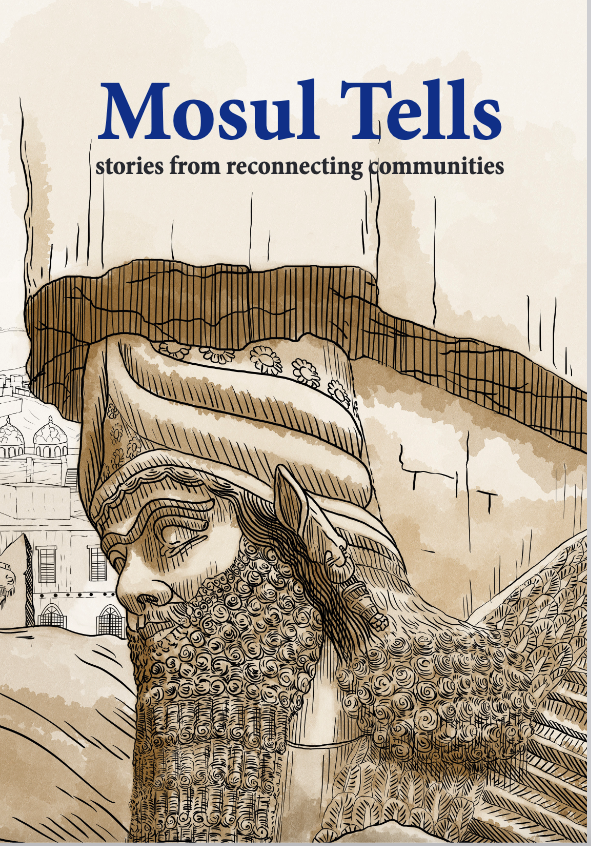Mosul, the second largest city of Iraq, has a lot to tell. Join us on a journey through the rich and diverse (hi)stories it inhabits. It looks back on thousands of years of history as it emerged on the grounds of the ancient Assyrian city of Nineveh – once the largest city in the world.
Mosul, the city of two springs, and its surrounding Ninawa region, have always been a melting pot of cultures: Arabs, Kurds, Assyrians, Turkmen, Kakai, Jews and Yezidis have all lived here.
In recent years, Mosul has gained notoriety when the so-called Islamic State of Iraq and Syria (ISIS) declared the city the capital of its Caliphate. From Mosul, ISIS spread scenes of destruction, violence, murder and expulsion around the world.
During this time, cultural expression was forbidden. Thousands of Yezidi and other underrepresented groups were either murdered or forced into slavery. The destruction of a Lamassu sculpture by ISIS with a hammer drill, and the burning down of the Central Library of Mosul in 2015, symbolised the decay of civilisation.
According to UNESCO, 80% of the city’s cultural heritage was destroyed under ISIS rule. The wounds and fractions of the communities in Ninawa remain deep. Since its liberation in 2017, Mosul has been slowly recovering from the dark days of its past. The residents are going outdoors again and reconstruction has begun. Mosul, once known as the green city, is blossoming and cultural life is gradually returning. Restoring community links and healing wounds has become an important pillar of rebuilding the city.
The diverse face of the city and its surrounding area is the subject of this graphic novel. The book has been developed within the framework of the project Mosul Tells, a project funded by the German Federal Foreign Office. It strives to restore community links through arts and culture and foster social cohesion in Mosul and the Ninawa region. Through storytelling and puppet theatre, the project strengthens ties among the people living there. It creates a space to reconnect with the multiple (hi)stories of the city of Mosul.
The narratives in the book come from personal experiences, conversations and folk tales collected by a group of young adults between the ages of 18 and 35 from Ninawa who participated in oral history workshops with us in 2023. Coming from different ethnic and religious backgrounds, they all researched and interviewed in their respective communities and collected stories. Some of the stories are made accessible through a puppet theatre play, some through animation films and others through this graphic novel. The collected stories range from the history of the Grand al-Tahira Church in Ninawa, to the cultural tradition4 of tattoos and a cross-religious project to fix the Hadba minaret of the Great Mosque of Al-Nuri in Mosul.
We hope you will enjoy taking a walk with us through the streets of Mosul to discover the diversity of the city and the surrounding area of Ninawa.
